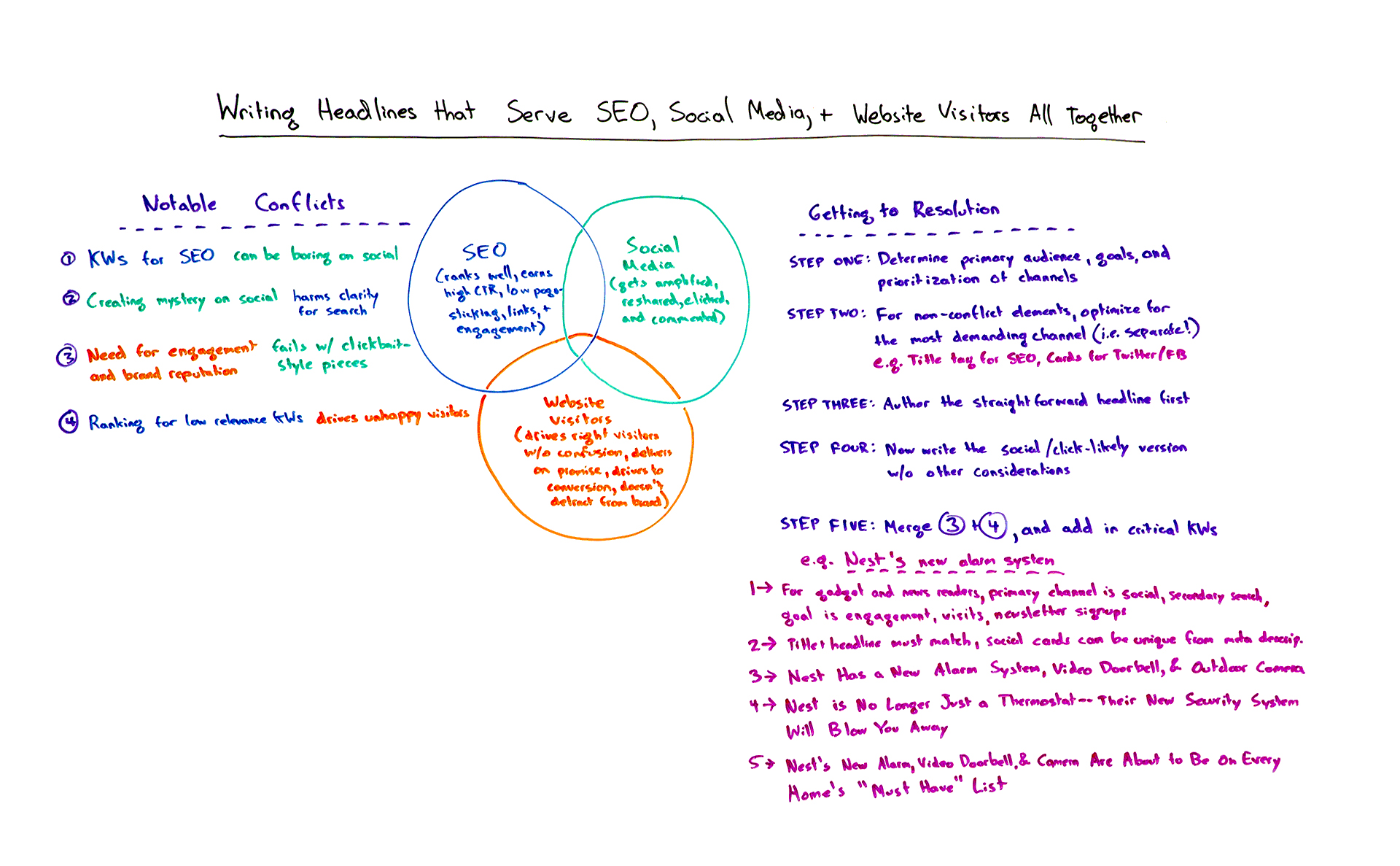Source: Moz

Have your headlines been doing some heavy lifting? If you’ve been using one headline to serve multiple audiences, you’re missing out on some key optimization opportunities. In today’s Whiteboard Friday, Rand gives you a process for writing headlines for SEO, for social media, and for your website visitors — each custom-tailored to its audience and optimized to meet different goals.


Click on the whiteboard image above to open a high-resolution version in a new tab!
Video Transcription
Howdy, Moz fans, and welcome to another edition of Whiteboard Friday. This week we’re going to chat about writing headlines. One of the big problems that headlines have is that they need to serve multiple audiences. So it’s not just ranking and search engines. Even if it was, the issue is that we need to do well on social media. We need to serve our website visitors well in order to rank in the search engines. So this gets very challenging.

I’ve tried to illustrate this with a Venn diagram here. So you can see, basically…
In the SEO world of headline writing, what I’m trying to do is rank well, earn high click-through rate, because I want a lot of those visitors to the search results to choose my result, not somebody else’s. I want low pogo-sticking. I don’t want anyone clicking the back button and choosing someone else’s result because I didn’t fulfill their needs. I need to earn links, and I’ve got to have engagement.
On the social media side, it’s pretty different actually. I’m trying to earn amplification, which can often mean the headline tells as much of the story as possible. Even if you don’t read the piece, you amplify it, you retweet it, and you re-share it. I’m looking for clicks, and I’m looking for comments and engagement on the post. I’m not necessarily too worried about that back button and the selection of another item. In fact, time on site might not even be a concern at all.
Website visitors
For website visitors, both of these are channels that drive traffic. But for the site itself, I’m trying to drive right visitors, the ones who are going to be loyal, who are going to come back, hopefully who are going to convert. I want to not confuse anyone. I want to deliver on my promise so that I don’t create a bad brand reputation and detract from people wanting to click on me in the future. For those of you have visited a site like Forbes or maybe even a BuzzFeed and you have an association of, “Oh, man, this is going to be that clickbait stuff. I don’t want to click on their stuff. I’m going to choose somebody else in the results instead of this brand that I remember having a bad experience with.”
Notable conflicts
There are some notable direct conflicts in here.
- Keywords for SEO can be really boring on social media sites. When you try and keyword stuff especially or be keyword-heavy, your social performance tends to go terribly.
- Creating mystery on social, so essentially not saying what the piece is truly about, but just creating an inkling of what it might be about harms the clarity that you need for search in order to rank well and in order to drive those clicks from a search engine. It also hurts your ability generally to do keyword targeting.
- The need for engagement and brand reputation that you’ve got for your website visitors is really going to hurt you if you’re trying to develop those…
Audience Team
The digital audience insights you need to build, manage and market to your digital audiences.

